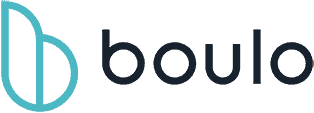An HR manager plays a pivotal role in sculpting the workforce, significantly impacting employee retention and shaping company culture. Success in this role demands problem-solving skills, exceptional management capabilities, and great communication skills, among others. To equip you with the tips you need to excel, we’ve crafted an interview guide filled with the top five interview questions, plus insightful answers. We aim to elevate your confidence, ensuring you ace your interview and stand out as a top candidate.
General HR Background
- Can you describe your previous HR roles and how they have prepared you for this position?
- In my previous HR roles, I’ve had diverse responsibilities, including talent acquisition, employee relations, benefits management, and compliance with labor laws. At [Company X], I led a team revamping the onboarding process, reducing employee turnover by 15 percent within the first year. At [Company Y], I implemented a comprehensive performance management system that aligned employee objectives with the company’s strategic goals, boosting overall productivity by 20 percent. These experiences have equipped me with a deep understanding of developing and implementing effective HR strategies that support business objectives and enhance employee satisfaction. My background will enable me to contribute effectively to your team by aligning HR initiatives with your company’s growth ambitions.”
Behavioral
- Can you give an example of when you had to mediate an employee conflict? What was your approach, and what was the outcome?
- In a previous role, I faced a situation where two team members misunderstood project responsibilities, leading to tension and decreased productivity. I approached the situation by meeting with each employee individually to understand their perspectives. I then facilitated a mediation session where both parties could communicate their concerns in a controlled and respectful environment. By guiding the conversation towards finding common ground and emphasizing the importance of collaboration, we could agree on a clear distribution of responsibilities and establish communication protocols to prevent similar issues. The outcome was conflict resolution and a stronger team dynamic, as the individuals learned to appreciate each other’s strengths.
HR Culture and Fit
- What is your approach to fostering a positive workplace culture?
- My approach to fostering a positive workplace culture is centered around transparency, recognition, and development. I believe in creating an environment where employees feel valued and understood. This means regularly communicating company values and goals, recognizing and celebrating achievements, and providing opportunities for professional growth. Additionally, I emphasize the importance of employee feedback through surveys and forums, ensuring the workforce feels heard and empowered to contribute ideas. By implementing these strategies, I’ve seen significant employee engagement and satisfaction improvements, which drive productivity and retention.
Leadership & Management
- Describe a time when you had to lead a significant organizational change. What strategies did you use to ensure its success?
- When the company I worked for decided to implement a new enterprise resource planning (ERP) system, it required a significant change in how every department operated. Understanding the challenges of change management, I led a cross-departmental team to manage the transition. By involving employees in the process and providing clear, consistent communication, we were able to mitigate resistance and smoothly transition to the new system. Post-implementation surveys showed that 80 percent of staff felt positive about the change, citing improved efficiency and transparency in processes.
Diversity, Equity, and Inclusion (DEI)
- What strategies do you employ to promote diversity and inclusivity during recruitment?
- To promote diversity and inclusivity during recruitment, I ensure our hiring practices are designed to reach a broad spectrum of candidates. This includes using diverse job boards, partnering with organizations that support underrepresented groups, and implementing blind recruitment processes to minimize unconscious bias. Additionally, I’ve trained our hiring teams on inclusive interviewing techniques and the importance of team diversity. We’ve established diversity and inclusion goals and track our progress to strengthen our commitment to the mission.
Now that you are equipped to excel in the interview, why not start applying for HR positions?

